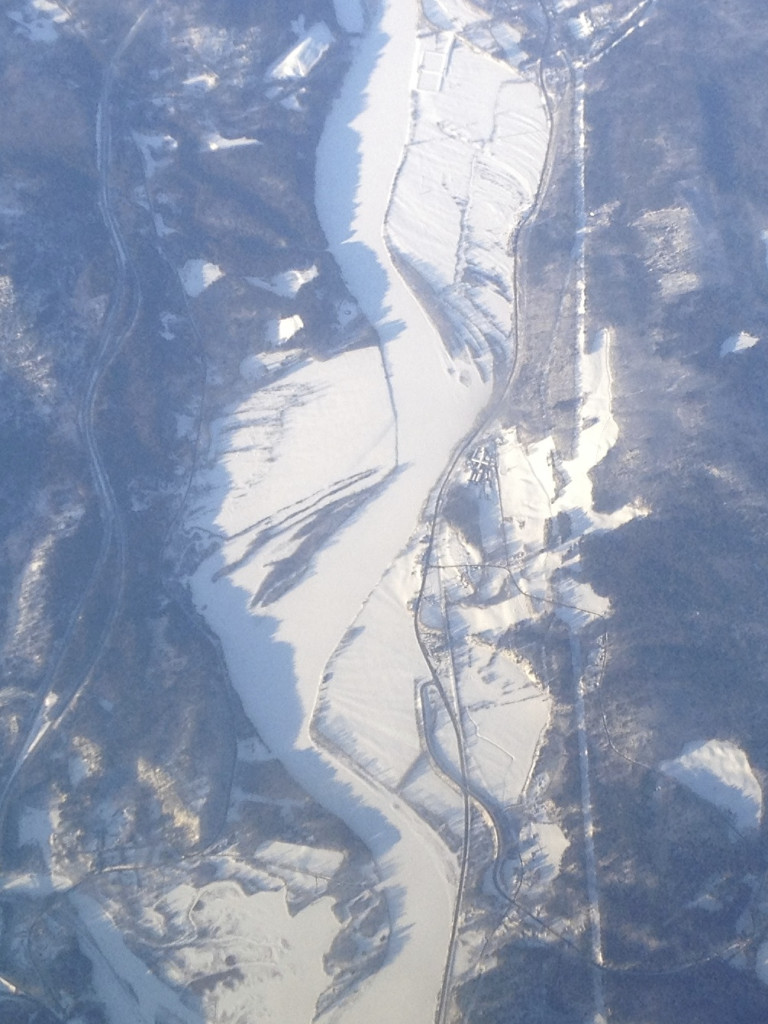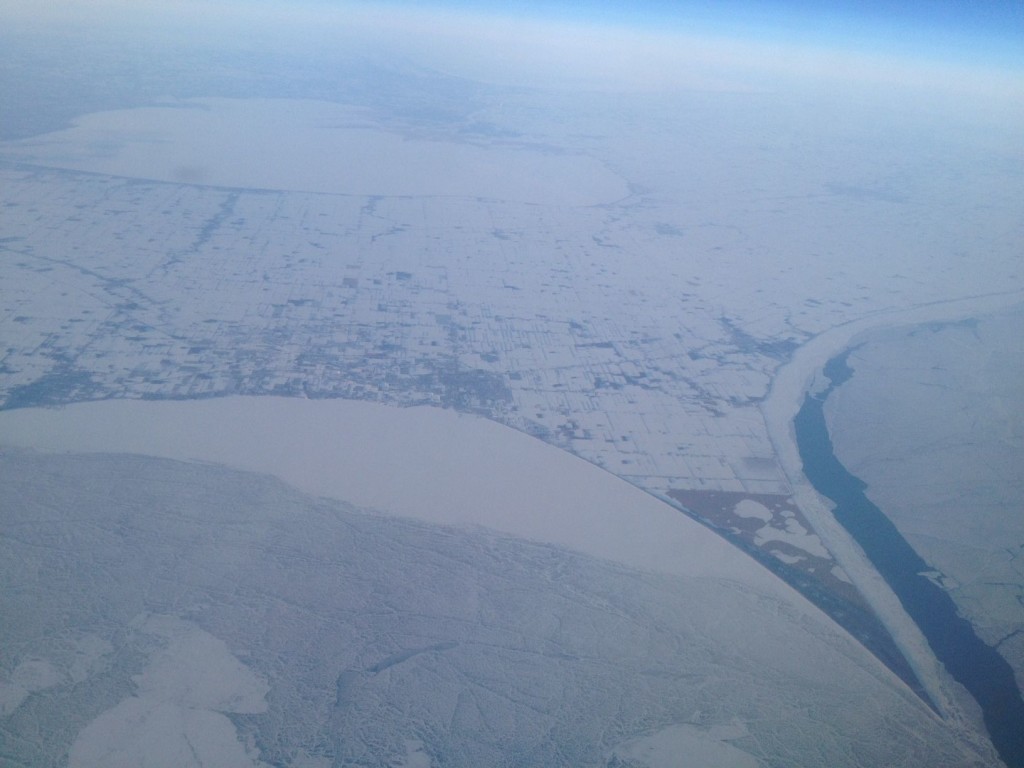I flew to Nashville via Chicago on Friday. The plane overflew some of my favorite birding haunts along the Connecticut River, from Charlestown to Walpole. I had planned on taking a day next week to check them out. Waterfowl should be starting to move north very soon. St. Patricks Day is peak (apparently the venerable saint could move more than snakes). Alas, a quick check out the window revealed that the river and associated cornfields were still in winter’s firm grip.
The plane continued west, reaching the eastern shore of Lake Erie about an hour into the flight, and traversed the length of the world’s 11th largest waterbody. With the exception of a few breaks here and there, the entire lake was covered in ice, with profound implications for birds. Last winter was comparably brutal, and by the end of February 2014 the Great Lakes were 92% covered (30-40% is normal). Lake Champlain also froze over in 2014, and waterfowl and other waterbirds that normally spend the winter on these lakes were forced to seek shelter elsewhere. Birds fleeing to the Gulf of Maine pass over New Hampshire, and several strays were found in unusual locations, including a Red-necked Grebe on Loon Mountain in January and a Horned Grebe found on a Plymouth doorstep three weeks later. These species are not uncommon in interior New Hampshire in spring and fall but are absent in winter (see New Hampshire Bird Records Volume 32, #4, page 4 for further discussion). With the ice cover on the lakes now greater than last year, we may again be witnessing an avian forced March. An out of place Red-necked Grebe was spotted in Great Meadows National Wildlife Refuge in Massachusetts on February 21, likely a refugee from Champlain or further west.
It may not seem like it, but the winter will soon pass. Midway through the flight, we passed over Point Pelee, an Ontario peninsula that juts south into the lake. It is one of the most famous birding destinations on the continent, renowned for the spectacular diversity of migrant songbirds that occur each spring and fall. You would be lucky to find 50 species at this famous National Park right now, but in a short couple of months, five times that many will cram its forests, fields and marshes. Roll on spring!



No comments yet.